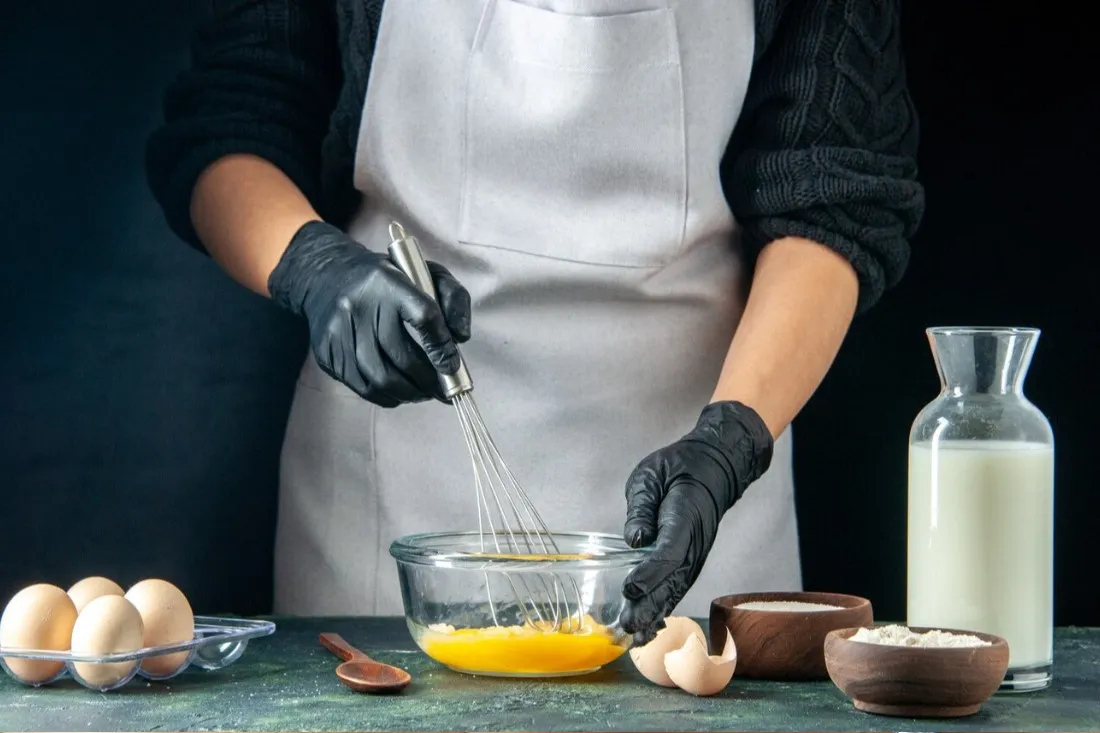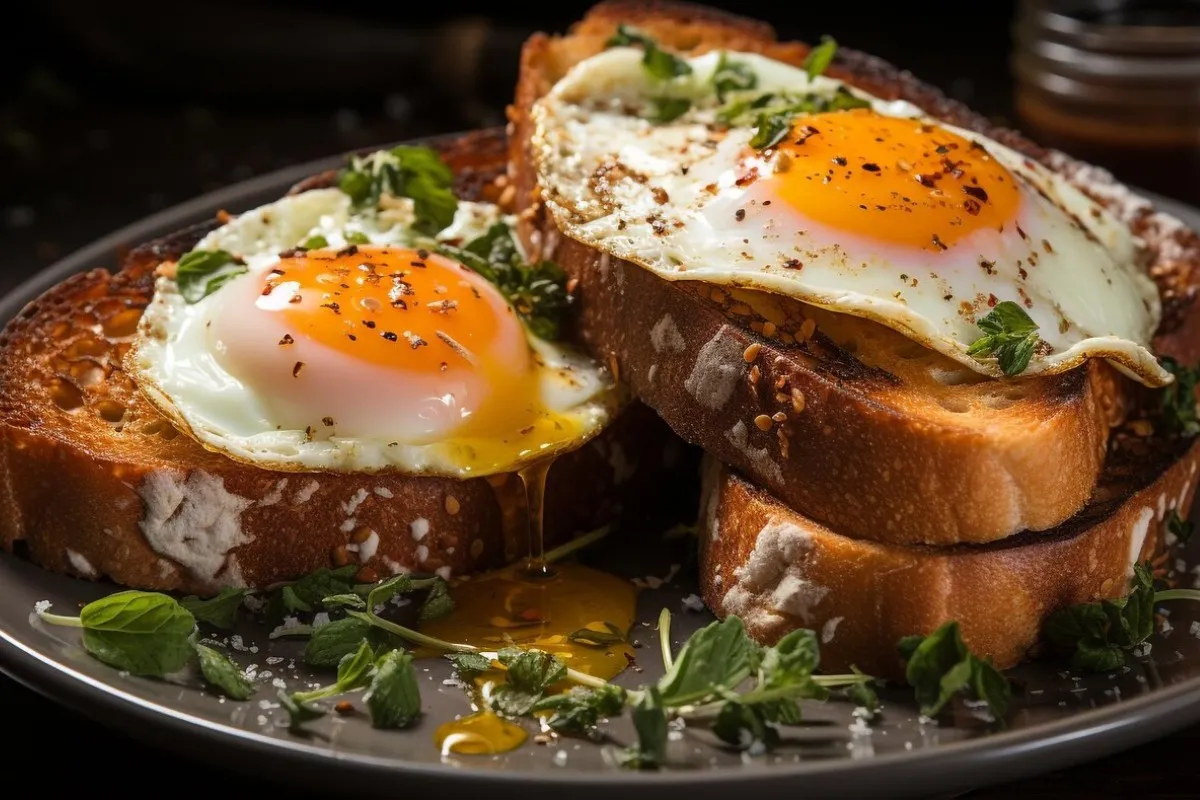Embark on a culinary journey to discover ‘What is a French egg dish called?’ as we delve into the heart of France’s gastronomy, where eggs transform into an array of exquisite dishes, from the fluffy omelets to the rich quiches, each telling a story of regional flavors and culinary mastery. As we unfold the secrets of these dishes, we’ll not only learn about their history and recipes but also gain insights into the cooking techniques that make French cuisine so renowned. Whether you’re a seasoned chef or a curious foodie, this article promises to enrich your understanding and appreciation of French egg delicacies.
Introduction to French Cuisine and Egg Dishes
The Role of Eggs in French Cooking
In French cuisine, eggs are more than ingredients; they symbolize culinary finesse. Revered for transforming dishes, eggs reflect the philosophy of creating sublime experiences from simple ingredients. The French elevate eggs into exquisite dishes, showcasing their culinary heritage.
Overview of French Culinary Techniques with Eggs
French chefs are renowned for their egg cooking techniques. Methods like “bain-marie” ensure gentle cooking. Skillful whisking is crucial for a perfect omelet. These methods are not just about recipes; they’re about understanding eggs’ delicate nature. This part of the article reveals how these techniques are art forms in French cooking.
Exploring Popular French Egg Dishes

Omelette – The Classic French Egg Dish
The omelet stands as a quintessential symbol of French culinary simplicity and elegance. Far from just being a breakfast staple, the French omelet is silky, tender, and gently folded, often filled with various herbs, cheese, or fine meats. Its preparation is an art form, requiring a perfect balance of technique and timing. The key lies in the swift whisking and the gentle folding, ensuring a creamy interior with a barely golden exterior. This dish, in its simplicity, captures the essence of French cooking – making something extraordinary out of the ordinary.
Quiche – A Versatile Egg Pastry
Quiche, a savory pie with a buttery crust and a rich, custard-like filling, is another testament to the versatility of eggs in French cuisine. Originating from the Lorraine region, the classic Quiche Lorraine features lardons and cheese, but there are countless variations incorporating everything from spinach and mushrooms to salmon and goat cheese. The quiche is not just a dish; it’s a canvas for creativity, allowing chefs and home cooks alike to experiment with flavors and textures.
Eggs en Cocotte – Baked Eggs French Style
Eggs en Cocotte, or shirred eggs, are a lesser-known but equally delightful French dish. Baked in small ramekins with cream, herbs, and often a touch of cheese, these eggs are a perfect blend of simplicity and sophistication. The slow baking process allows the eggs to set gently, resulting in a texture that is both creamy and comforting. This dish is a beautiful example of how French cuisine can transform the humble egg into a luxurious experience. For a detailed guide on preparing this elegant dish, check out our comprehensive guide to French Baked Eggs.
Crêpes – The Sweet and Savory Egg Delight
Lastly, we cannot talk about French egg dishes without mentioning crêpes. These thin, delicate pancakes can be both sweet and savory, making them a versatile option for any meal. The batter, made with eggs, flour, and milk, is the foundation for an array of fillings from the classic lemon and sugar to the more elaborate ham and cheese or ratatouille. Crêpes demonstrate the playful side of French cuisine, where a simple egg-based batter can become a delightful meal or dessert. After mastering crêpes, why not try another classic French dessert? Discover the best spots for Crème Brûlée and learn how to make it at home
Regional Variations of French Egg Dishes
Normandy Style Omelettes
In the picturesque region of Normandy, omelets take on a unique character, often enriched with local ingredients like Camembert cheese and apples, a nod to the region’s famed produce. The Normandy-style omelet is not just a dish; it’s a reflection of the local terroir, blending the flavors of the land with the simplicity of eggs. This variation showcases how regional influences can transform a classic dish into something distinctively local and special.
Provencal Quiche Variations
Moving south to Provence, the quiche absorbs the vibrant flavors of the Mediterranean. Here, you’ll find quiches bursting with sun-drenched ingredients like tomatoes, olives, and herbs like thyme and rosemary. The Provencal quiche is lighter, often featuring fresh vegetables and goat cheese, embodying the sunny and rustic charm of the region. It’s a colorful and flavorful take on the classic quiche, echoing the essence of Provencal cuisine.
Unique Egg Recipes from Different Regions of France
Each region of France has its way of celebrating eggs in its cuisine. From the rich, truffle-infused omelets of the Périgord region to the seafood-laden egg dishes of coastal areas like Brittany and Normandy, the diversity is astounding. These regional recipes are not just about the ingredients; they’re about history, culture, and the stories of the people who have perfected these dishes over generations.
Mastering French Egg Cooking Techniques

Tips for the Perfect Omelette
To craft the perfect French omelet, skill, and intuition are essential. Fresh eggs, a well-seasoned pan, and a touch of butter form the foundation. Whisk the eggs just enough to blend the whites and yolks, then cook them in a hot pan. The technique involves gentle stirring and folding to create layers of soft, custardy egg. The omelet should be tender and moist, not browned or overcooked. Mastering this technique elevates a simple egg dish into a culinary masterpiece.
Secrets to a Fluffy Quiche
Achieving a silky, airy texture in a quiche involves balancing the egg and cream custard. The ratio of eggs to cream is crucial for the right consistency. Gently whisk the eggs with cream, seasoning, and fillings, then pour into a pre-baked crust. Bake until set but still slightly wobbly in the center. This balance of flavor and texture is the hallmark of a flawless quiche.
Baking Eggs en Cocotte – Do’s and Don’ts
For creamy, indulgent Eggs en Cocotte, careful preparation is key. Crack the eggs into individual ramekins without breaking the yolks. Add a splash of cream and a sprinkle of herbs for flavor. Place the ramekins in a water bath to ensure even, gentle cooking. The oven temperature and timing should be precise to avoid overcooking. The eggs should set just right, with runny yolks, perfect for dipping with crusty bread.
Nutritional Value and Dietary Considerations
Health Benefits of Eggs
Eggs, a staple in French cuisine, are not only delicious but also packed with nutritional benefits. They are an excellent source of high-quality protein, essential amino acids, and a variety of vitamins and minerals, including Vitamin D, B12, and iron. Eggs also contain choline, an important nutrient for brain health. Their versatility in dishes like omelets and quiches makes it easy to incorporate these nutritional powerhouses into a balanced diet. However, it’s important to consider the additional ingredients that often accompany eggs in French dishes, such as cheese and cream, which can add to the calorie and fat content.
Dietary Considerations in French Egg Recipes
While French egg dishes are undeniably delectable, they may not suit all dietary preferences and restrictions. Traditional recipes often include dairy and gluten, which can be problematic for those with intolerances or allergies. However, there are ways to modify these dishes to accommodate different dietary needs. For instance, dairy-free alternatives can be used in quiches, and gluten-free flours can be employed for crêpes. It’s also possible to increase the nutritional value of these dishes by adding vegetables or using lean protein sources, making them a healthier option without sacrificing flavor.
Pairing French Egg Dishes with Beverages and Sides

Complementing Flavors with the Right Beverage
In this section, we can explore the art of pairing French egg dishes with the perfect beverages. For instance, discussing which wines or non-alcoholic drinks best complement the rich flavors of a Quiche Lorraine or the delicate taste of a classic French omelet. This could include suggestions for both traditional French beverages and more modern, global options. Curious about other culinary comparisons? Learn the difference between Taco Bell’s Chalupa and Gordita in this detailed Taco Bell Showdown.
Choosing the Perfect Sides
Here, the focus would be on what side dishes best accompany French egg dishes. This could range from simple green salads with a vinaigrette dressing to more elaborate sides like ratatouille or sautéed vegetables. The aim would be to offer readers ideas on how to create a balanced and complete meal around the egg dish, considering factors like texture, flavor, and nutritional balance. Looking for a healthy and delicious side? Try this Oven-Fried Squash recipe that pairs wonderfully with French egg dishes
The Cultural Significance of French Egg Dishes
Egg Dishes in French History and Society
In this section, we can delve into how French egg dishes have played a role in the country’s history and culture. For instance, discussing the historical origins of dishes like Quiche Lorraine and how they have evolved. Additionally, we can explore the role of these dishes in French society, such as their presence in traditional celebrations and everyday family meals. In the realm of French cuisine, eggs are more than just an ingredient; they are a symbol of culinary finesse and versatility.
Influence of French Egg Dishes on Global Cuisine
Furthermore, this part could examine the influence of French egg dishes on global culinary practices. We can highlight how French techniques in egg preparation have inspired chefs worldwide and how these dishes have been adapted to various cultures. This exploration will not only provide historical and cultural context but also showcase the global impact of French cuisine.
Frequently Asked Questions
Common Queries and Expert Answers
Q: What makes a French omelet different from other omelets?
A: A French omelet is known for its smooth, silky exterior and tender, slightly runny interior. Unlike American omelets, which are often cooked until fully set and filled with various ingredients, French omelets have a more refined texture and are typically rolled or folded with minimal filling.
Q: Can quiche be made ahead of time for events?
A: Absolutely! Quiche is a fantastic make-ahead dish. It can be baked, cooled, and then refrigerated. Before serving, simply reheat it in the oven. Some say a quiche’s flavor deepens when made a day in advance.
Q: Are there any quick tips for perfecting crêpes?
A: The key to perfect crêpes is a smooth, thin batter and a hot, lightly greased pan. Pour a small amount of batter into the center of the pan, then quickly tilt it in a circular motion to spread the batter thinly. Cook each side until lightly golden, and don’t be discouraged if the first one doesn’t turn out perfectly – it’s often called the ‘sacrificial crêpe’!
Q: How can I make my Eggs en Cocotte dairy-free?
A: To make Eggs en Cocotte dairy-free, substitute the cream with a dairy-free alternative like almond or coconut milk. You can also add dairy-free cheese or increase the number of herbs and spices for extra flavor.
Wrapping Up and Further Reading
Summary of French Egg Dishes
In this culinary journey, we’ve explored the rich tapestry of French egg dishes, each embodying the elegance and diversity of French cuisine. From the classic omelet to the versatile quiche, the comforting Eggs en Cocotte, and the delightful crêpes, these dishes showcase the remarkable versatility of eggs in the hands of skilled French chefs. We’ve delved into regional variations, cooking techniques, and nutritional insights, offering a comprehensive view of how these simple ingredients are transformed into culinary masterpieces.

